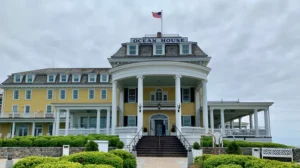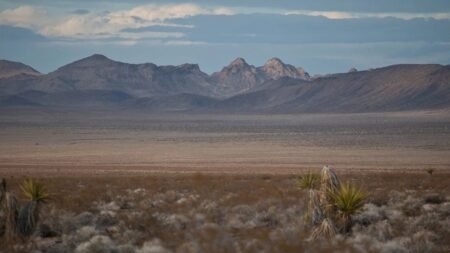The Grand Canyon Lodge, the only hotel located on the North Rim of Grand Canyon National Park, was destroyed in a fast-moving wildfire in early July 2025. This historic lodge, a key attraction for visitors to the North Rim, was lost to the Bravo Dragon Fire, which began from a lightning strike on July 4. Park officials confirmed the destruction and announced that the North Rim will remain closed for the rest of the season due to the damage caused by the fire.
The Grand Canyon Lodge has a long and rich history, dating back to its original opening in 1928. It quickly became a major highlight for visitors to the North Rim, offering not only lodging but also a unique architectural style that reflected the natural beauty of the park. The lodge was designed with a rustic look, featuring a sloped roof, large wooden beams, and a limestone exterior. Inside, guests enjoyed a bright sunroom with large windows providing dramatic views of the Grand Canyon, often the first breathtaking sight many saw when visiting this side of the canyon.
However, in 1932, the lodge was destroyed by a kitchen fire. It was rebuilt five years later in 1937, using much of the original stone from the first building. This reconstruction preserved the historic charm and continued to serve as a welcoming place for visitors. Over the decades, the lodge became known as a place that felt frozen in time, capturing the spirit of early 20th-century national park architecture.
Located on the North Rim, the lodge was less visited than the South Rim of the Grand Canyon but offered a quieter, more remote experience. The North Rim itself is only open during the warmer months, as heavy snow and harsh weather conditions close access in winter. The lodge and surrounding facilities served as a hub for visitors exploring the northern side of the canyon, offering accommodations, dining, and access to scenic viewpoints.
The wildfire that destroyed the lodge started as a controlled burn but quickly grew out of control, forcing fire crews to switch to full suppression efforts. Alongside the lodge, the fire destroyed several other important park facilities including a visitor center, a gas station, a water treatment plant, an administrative building, and employee housing. Fortunately, no injuries have been reported, and all guests and employees were safely evacuated from the area.
The Bravo Dragon Fire has burned approximately 5,000 acres inside the park, while another nearby wildfire, the White Sage Fire, has burned over 40,000 acres just outside the park. Together, these fires have affected more than 45,000 acres of land. The White Sage Fire started after a thunderstorm on July 9, prompting full evacuation orders in the area. Smoke and hazardous conditions have also led park officials to close Phantom Ranch, a popular stop for river rafters on the Colorado River.
One dangerous consequence of the fire was the burning of the park’s water treatment plant, which led to the release of chlorine gas. This gas, being heavier than air, spread into the inner canyon, causing health risks for firefighters and hikers. Authorities removed people from the affected areas to prevent breathing problems linked to chlorine gas exposure.
Aramark, the company operating the lodge, expressed heartbreak over the loss of the historic building. The lodge had been a symbol of the North Rim and a beloved destination for visitors seeking an authentic Grand Canyon experience. Park officials continue to monitor the fires closely as crews work to contain and control the remaining flames.
Efforts to build containment lines and buffer zones are underway, with crews focusing on protecting areas like the Vermilion Cliffs from further fire damage. Bulldozers and hand crews have made progress along the southern edges of the White Sage Fire, although dry conditions and dead trees continue to fuel the fire’s spread to the east and north.
The destruction of the Grand Canyon Lodge marks a significant loss for Grand Canyon National Park and its visitors. The lodge stood as a historic monument to the early days of national park tourism and architecture. While the North Rim remains closed for the season, authorities urge visitors to stay updated on park alerts and avoid the area until it is safe to return.







